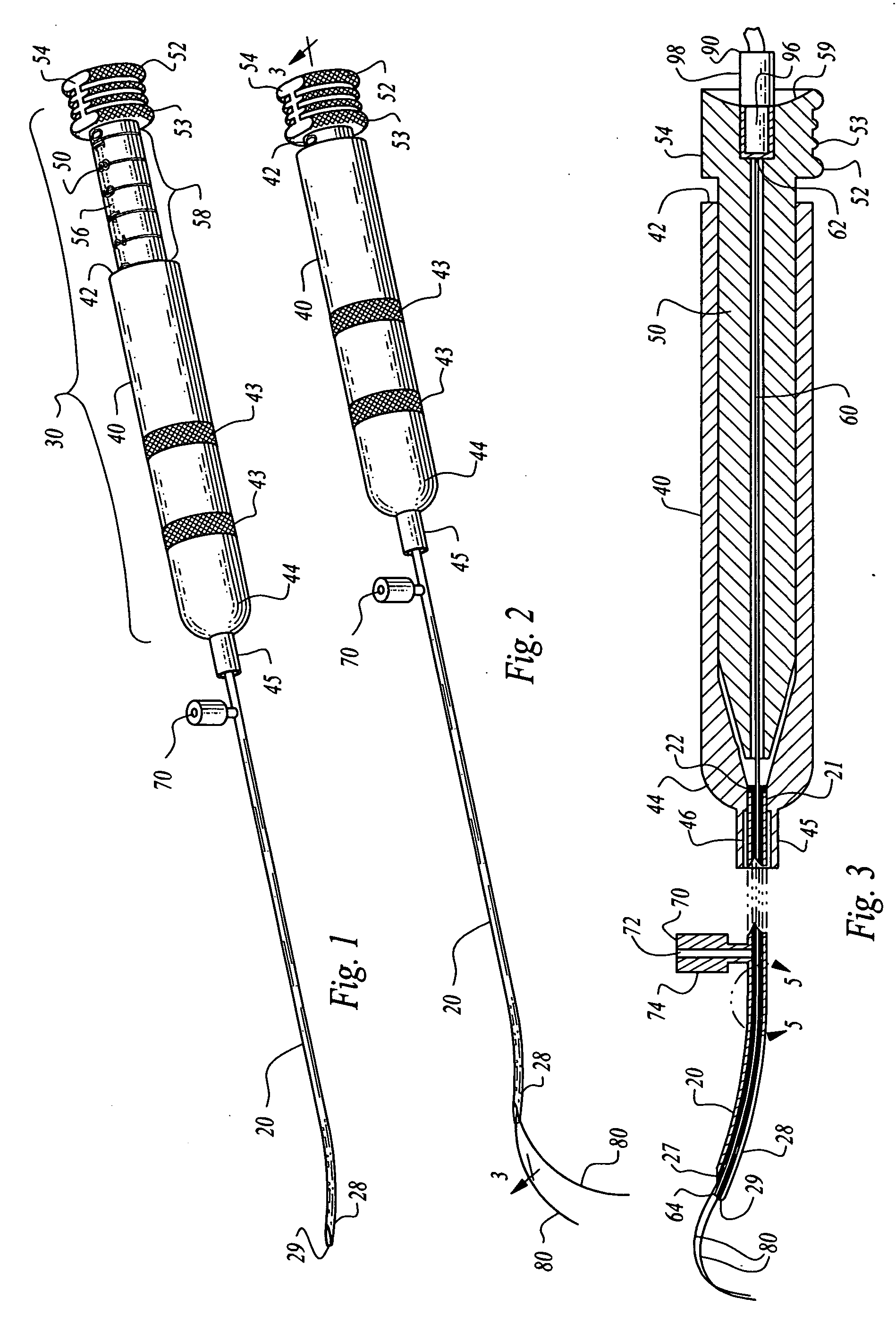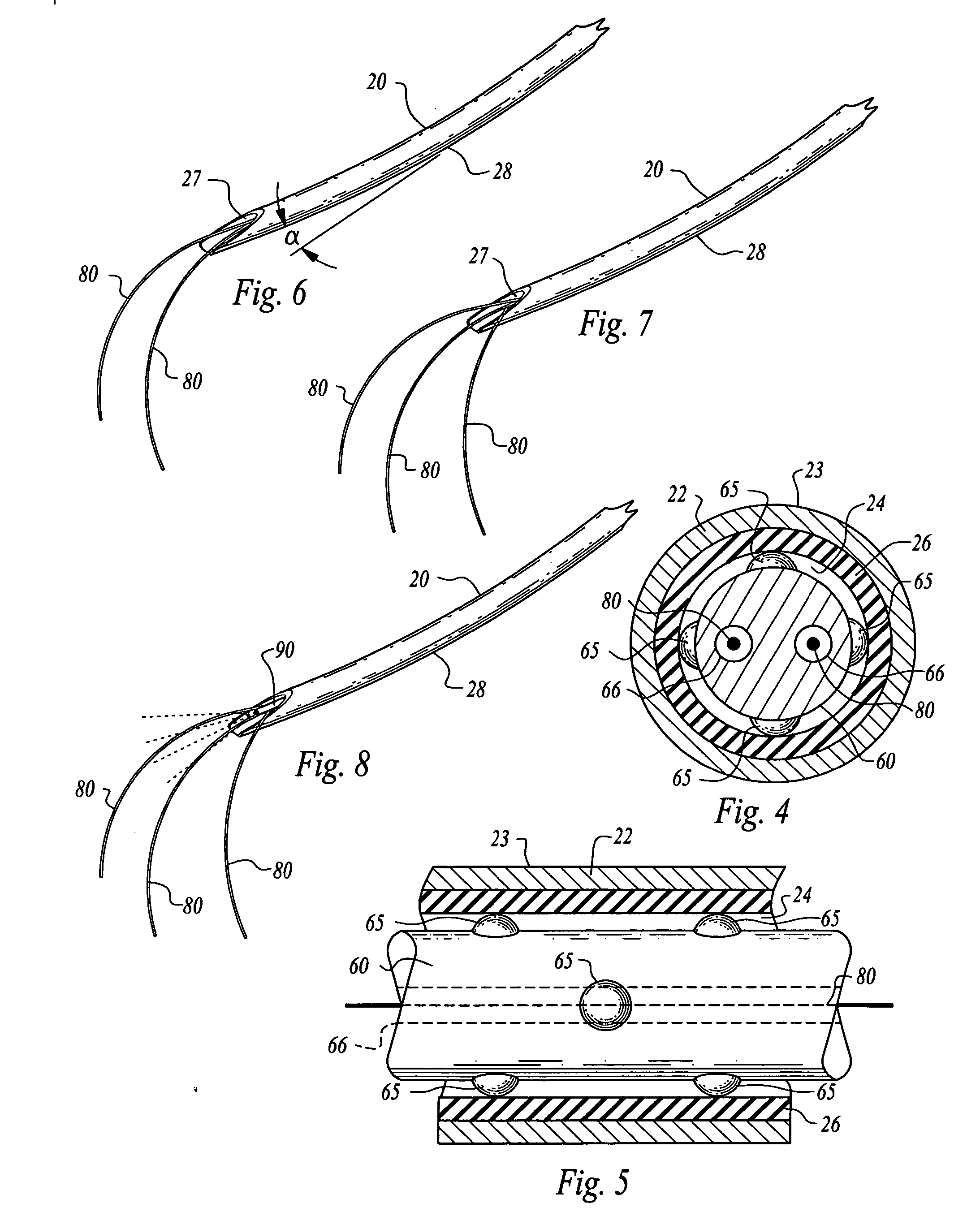Navigable, multi-positional and variable tissue ablation apparatus and methods
a tissue ablation and multi-position technology, applied in the field of navigation, multi-positional and variable tissue ablation apparatus and methods, can solve the problems of affecting time constants, affecting treatment procedures, and destroying tissue with some volume in the vicinity of the electrode, so as to accurately determine the location of the electrodes
- Summary
- Abstract
- Description
- Claims
- Application Information
AI Technical Summary
Benefits of technology
Problems solved by technology
Method used
Image
Examples
Embodiment Construction
[0073] Referring to FIG. 1 and FIG. 2, a tissue ablation apparatus 10, hereinafter, the VIPER 10 includes a cylindrical tubular stylet 20. The stylet 20 is connected to a proximal control assembly 30. The control assembly 30 includes a female housing 40 and a male linear / rotational control member 50. The control member 50 is connected to a mandrel 60. The mandrel 60 is slidably and rotatably received within the stylet 20. A side infusion port 70 is disposed on a side of the stylet 20. One or more tines 80 are disposed and captured within the mandrel 40. The tines 80 are connected to the control member 50 of the control assembly 30. The control member 50 is further electrically and optically connected to an external system monitoring and control unit.
[0074] In further detail, the VIPER 10 includes a distal cylindrical elongate tubular stylet 20 fixably attached to a proximal control assembly 30. The stylet 20 is sufficiently small and made of sufficiently rigid material, such as sur...
PUM
 Login to View More
Login to View More Abstract
Description
Claims
Application Information
 Login to View More
Login to View More - R&D
- Intellectual Property
- Life Sciences
- Materials
- Tech Scout
- Unparalleled Data Quality
- Higher Quality Content
- 60% Fewer Hallucinations
Browse by: Latest US Patents, China's latest patents, Technical Efficacy Thesaurus, Application Domain, Technology Topic, Popular Technical Reports.
© 2025 PatSnap. All rights reserved.Legal|Privacy policy|Modern Slavery Act Transparency Statement|Sitemap|About US| Contact US: help@patsnap.com



